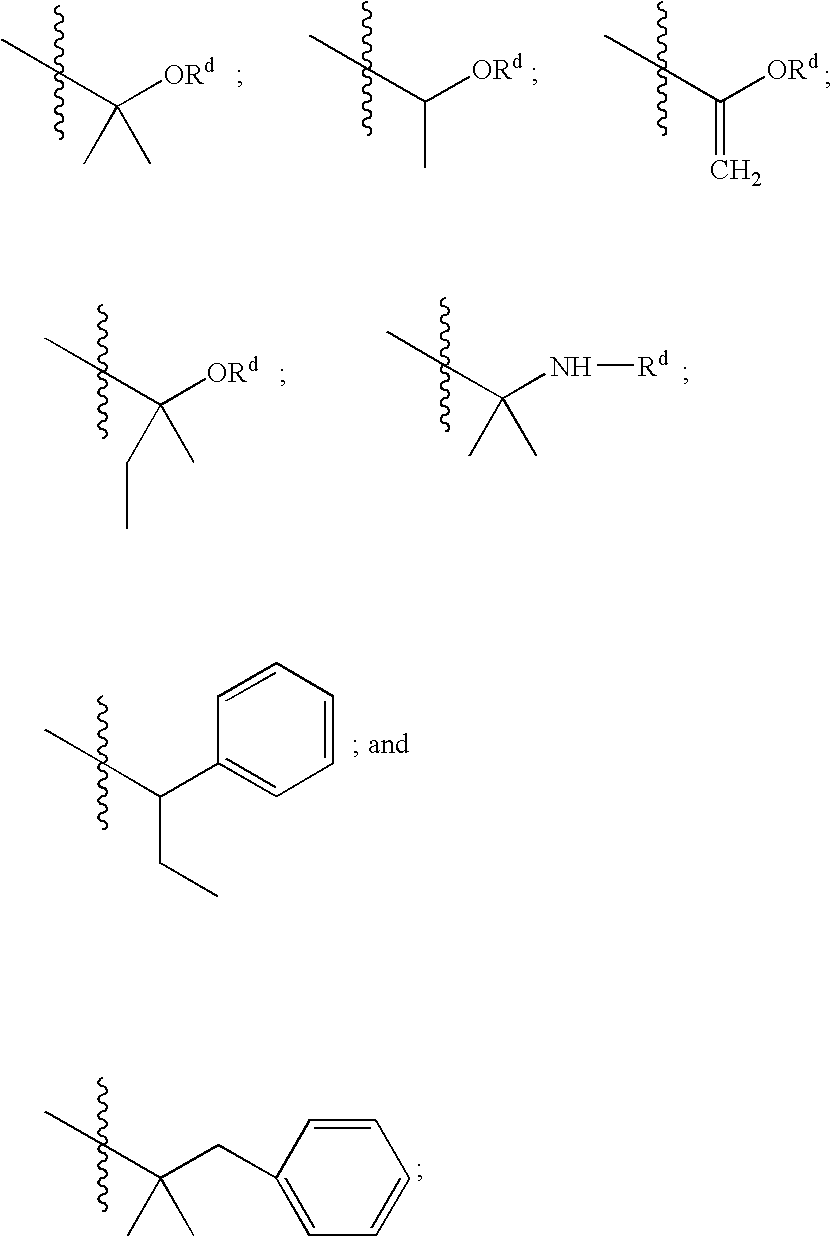Substituted amides
a technology of substituting amides and amides, applied in the field of substituting amides, can solve the problems of overeating, psychosis, memory loss, sedation,
- Summary
- Abstract
- Description
- Claims
- Application Information
AI Technical Summary
Benefits of technology
Problems solved by technology
Method used
Image
Examples
reference example 1
[0301]
2-(2-Fluorophenyloxy)-2-methylpropionic acid
[0302] To a solution of 2-fluorophenol (2.0 g, 18 mmol) and 1,1,1-trichloro-2-methyl-2-propanol (7.9 g, 45 mmol) in acetone (100 mL) was added sodium hydroxide (7.1 g, 0.18 mol), and an ice-water bath was periodically applied to maintain a gentle reflux. After the reflux subsided, the reaction was stirred for one additional hour. The volatile materials were removed on a rotary evaporator, and the residue partitioned between ether (100 mL), hexane (100 mL) and water (200 mL). The aqueous layer was separated and acidified with concentrated hydrochloric acid (pH=2), and extracted with ether (3×100 mL). The combined extracts were dried over anhydrous magnesium sulfate, filtered, and concentrated to dryness to give the title compound, which was used without further purification. 1H NMR (500 MHz, CD3OD): δ 7.15-7.05 (m, 4H), 1.56 (s, 6H). LC-MS: m / e 199 (M+1)+ (2.3 min).
[0303] The acids of Reference Examples 2-12 were prepared following ...
reference example 2
[0304]
2-(3-Fluorophenyloxy)-2-methylpropionic acid
[0305]1H NMR (500 MHz, CD3OD): δ 7.26 (ddd, 1H), 6.77-6.70 (m, 2H), 6.64 (dt, 1H), 1.59 (s, 6H). LC-MS: m / e 199 (M+1)+, (2.4 min).
reference example 3
[0306]
2-(4-Fluorophenyloxy)-2-methylpropionic acid
[0307]1H NMR (500 MHz, CD3OD): δ 7.02-6.92 (m, 4H), 1.54 (s, 6H).
PUM
| Property | Measurement | Unit |
|---|---|---|
| Mass | aaaaa | aaaaa |
| Dimensionless property | aaaaa | aaaaa |
| Mass | aaaaa | aaaaa |
Abstract
Description
Claims
Application Information
 Login to View More
Login to View More - R&D
- Intellectual Property
- Life Sciences
- Materials
- Tech Scout
- Unparalleled Data Quality
- Higher Quality Content
- 60% Fewer Hallucinations
Browse by: Latest US Patents, China's latest patents, Technical Efficacy Thesaurus, Application Domain, Technology Topic, Popular Technical Reports.
© 2025 PatSnap. All rights reserved.Legal|Privacy policy|Modern Slavery Act Transparency Statement|Sitemap|About US| Contact US: help@patsnap.com



